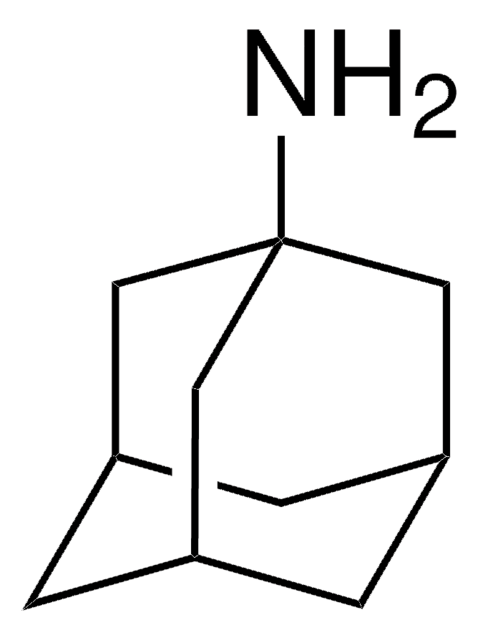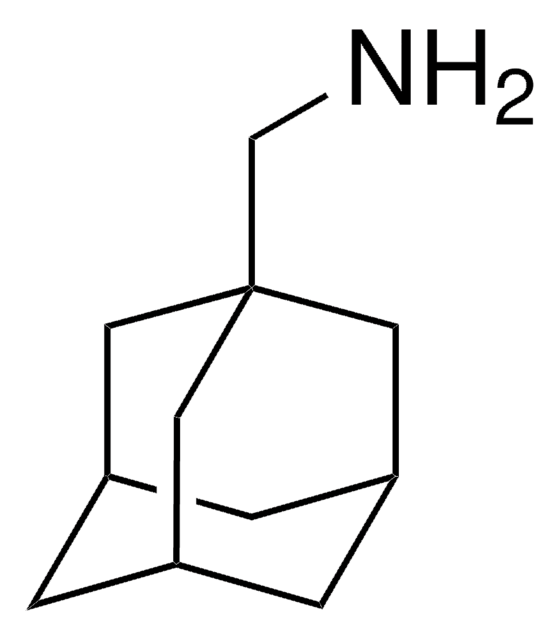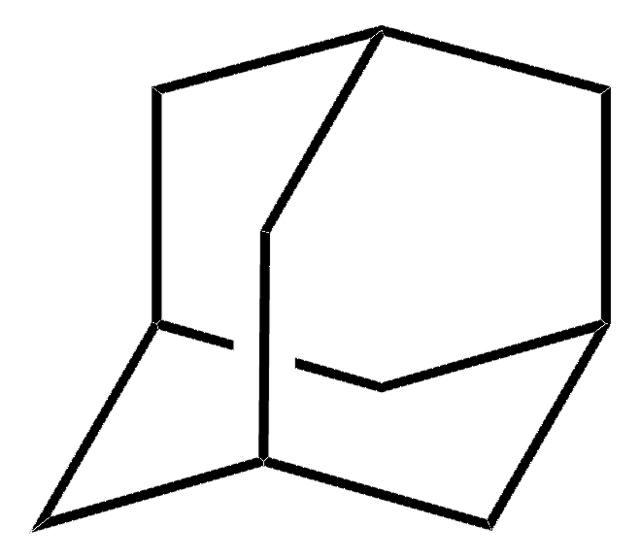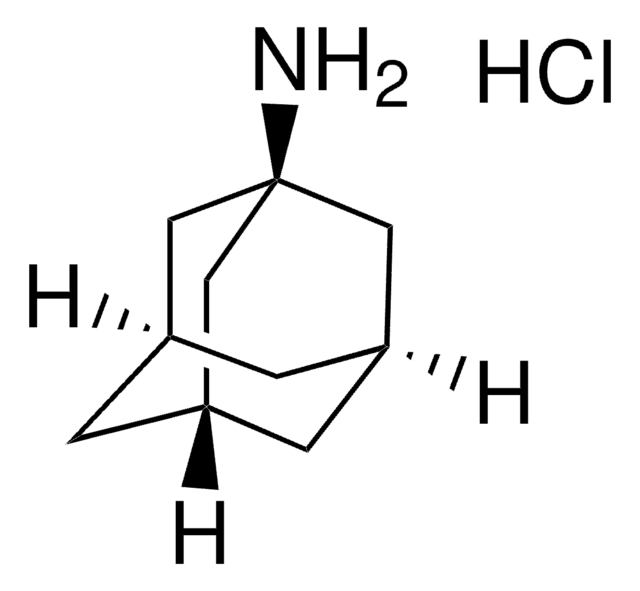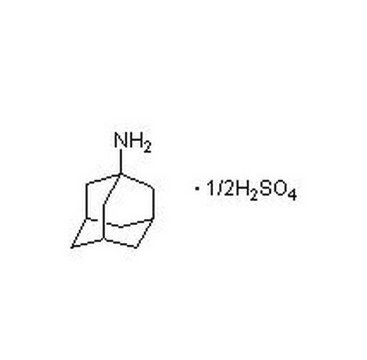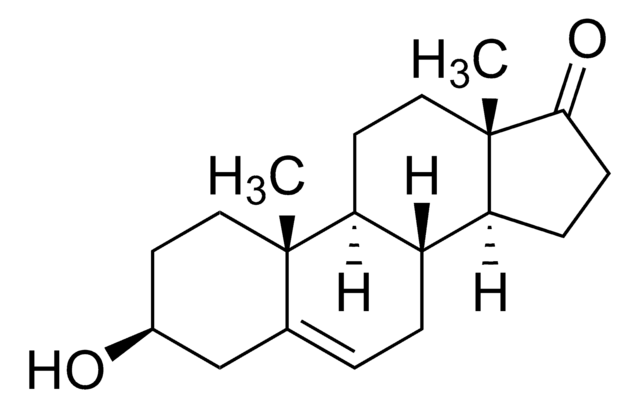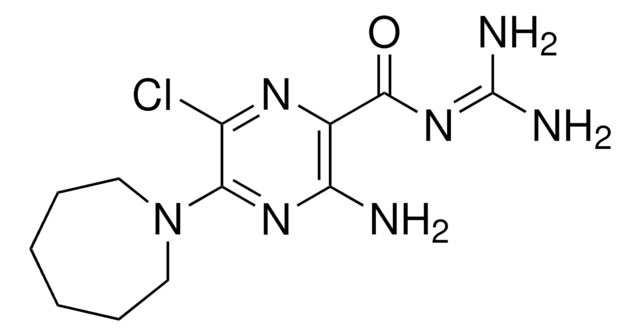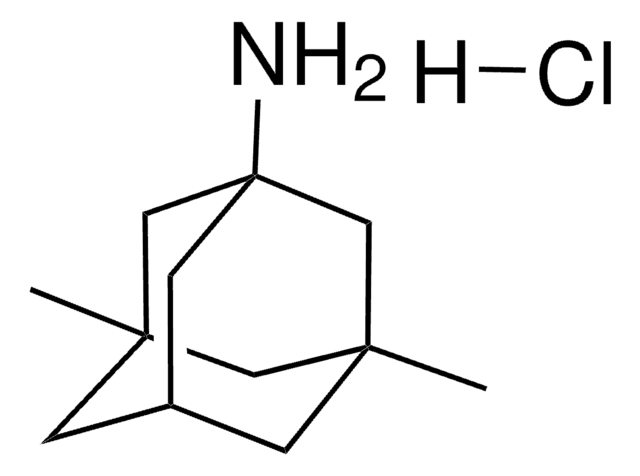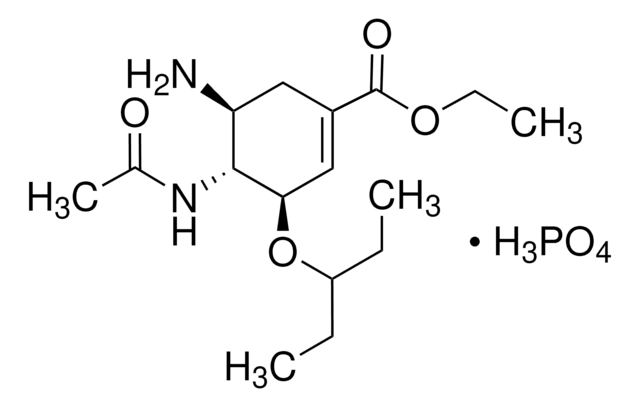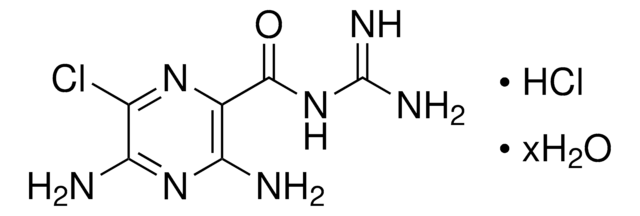A1260
Amantadine hydrochloride
≥98% (TLC), powder, NMDA receptor antagonist
Synonym(s):
1-Adamantanamine hydrochloride, 1-Adamantylamine hydrochloride, 1-Aminoadamantane hydrochloride, NSC 83653, Tricyclo[3.3.1.13,7]decan-1-amine hydrochloride
About This Item
Recommended Products
Product Name
Amantadine hydrochloride,
form
powder
Quality Level
solubility
H2O: 50 mg/mL
ethanol: soluble
originator
Endo
SMILES string
Cl[H].[H][C@@]12C[C@@]3([H])C[C@@]([H])(C1)CC(N)(C2)C3
InChI
1S/C10H17N.ClH/c11-10-4-7-1-8(5-10)3-9(2-7)6-10;/h7-9H,1-6,11H2;1H/t7-,8+,9-,10-;
InChI key
WOLHOYHSEKDWQH-SOVZANNPSA-N
Looking for similar products? Visit Product Comparison Guide
General description
Application
- to determine its effectiveness in reducing surgery-induced cognitive impairment
- to preincubate multipotent stem cells (MSCs), to investigate the cellular internalization pathway
- to determine whether amantadine-attenuated sepsis-induces neuroinflammation and dysfunction of learning and memory
- to preincubate primary cultured rat dental pulp stem cells (rDPSCs)
- to determine the pathway of internalization
Biochem/physiol Actions
Features and Benefits
Signal Word
Warning
Hazard Statements
Precautionary Statements
Hazard Classifications
Acute Tox. 4 Oral
Storage Class Code
11 - Combustible Solids
WGK
WGK 3
Flash Point(F)
Not applicable
Flash Point(C)
Not applicable
Personal Protective Equipment
Choose from one of the most recent versions:
Already Own This Product?
Find documentation for the products that you have recently purchased in the Document Library.
Customers Also Viewed
Related Content
Discover Bioactive Small Molecules for ADME/Tox
Our team of scientists has experience in all areas of research including Life Science, Material Science, Chemical Synthesis, Chromatography, Analytical and many others.
Contact Technical Service